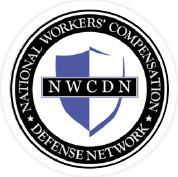OSHA Pushes Back Confined Spaces Enforcement For ‘Good Faith’ Home Builders
| OSHA has decided to give employers in residential construction three more months to fully comply with the agency’s confined spaces in construction standard as long as they are demonstrating “good faith” efforts to follow the new regulations, with OSHA setting specific guidelines for that determination.
Agency officials already once provided a two-month extension of the date to begin full enforcement of the standard, which industry has complained is too complex to meet under the final rule’s timetable. The rule in general has also faced litigation, but it was not clear whether the extension was related to the lawsuit. OSHA recently posted a new enforcement memorandum from Jim Maddux, construction director, which outlined the latest enforcement policy on the standard published in May. The rule went into effect Aug. 3. Officials earlier gave employers until Oct. 2 before issuing citations under the confined spaces rule if they met OSHA’s requirements for good faith efforts. That policy will now be extended through Jan. 8, but only for employers in residential construction work. Employers must be providing training to qualify for the extension. “Before January 8, 2016, OSHA will not issue citations under the Confined Spaces in Construction standard to an employer engaged in residential construction work if the employer is making good faith efforts to comply with the standard, as long as the employer is in compliance with either the training requirements of the standard, found at 29 CFR 1926.1207, or the former training requirements found at 29 CFR 1926.21(b)(6)(i),” the agency says. The earlier training requirement provided: “All employees required to enter into confined or enclosed spaces shall be instructed as to the nature of the hazards involved, the necessary precautions to be taken, and in the use of protective and emergency equipment required. The employer shall comply with any specific regulations that apply to work in dangerous or potentially dangerous areas.” Employers who fail to train their employees consistent with either regulation would properly be cited, OSHA says. Factors OSHA will consider when evaluating good faith efforts include:
— Christopher Cole () |

